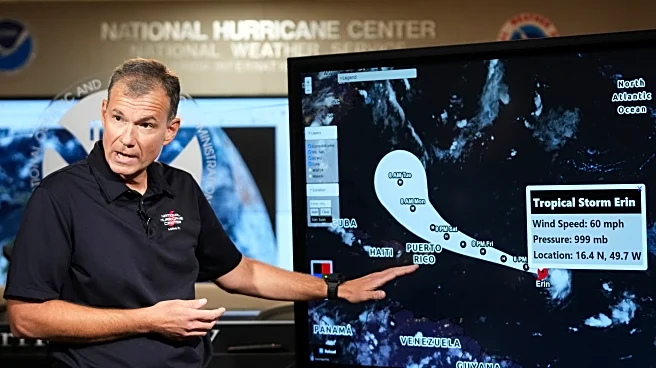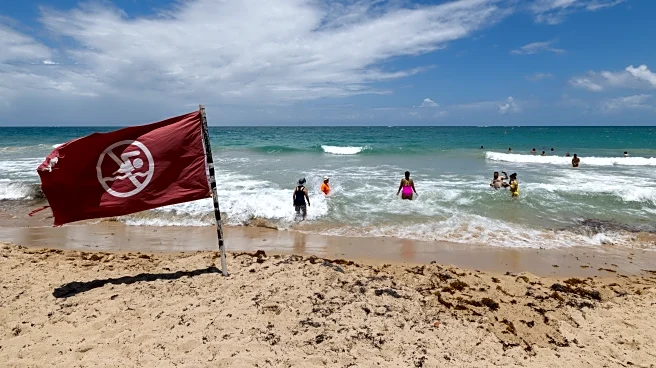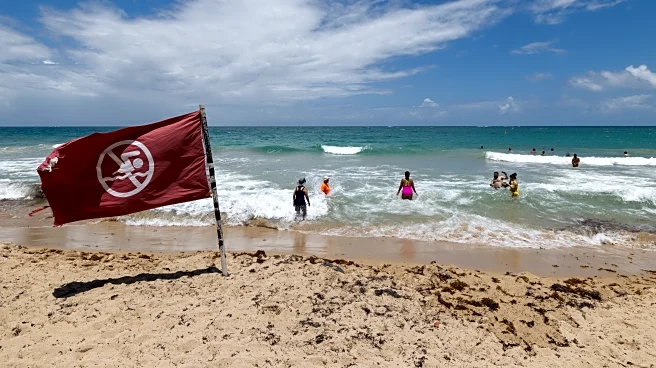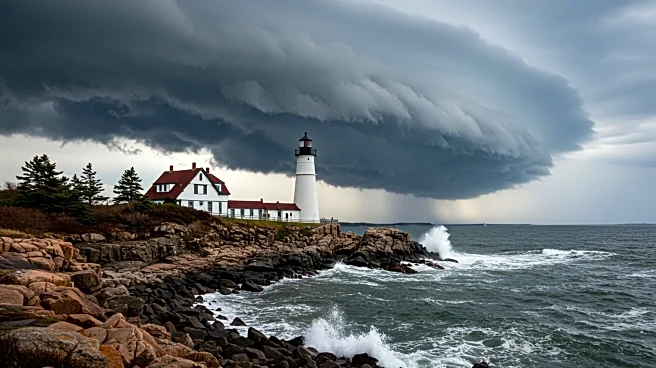What is the story about?
What's Happening?
Hurricane Erin has intensified rapidly, reaching Category 5 status over the weekend as it tracked across the Caribbean. The storm strengthened from Category 1 to Category 5, with sustained winds recorded at 160 mph by US Air Force hurricane hunters. Erin is the first of the five named storms this hurricane season to achieve hurricane status, and it quickly escalated to the strongest category on the Saffir-Simpson scale. The hurricane passed north of Puerto Rico and the British Virgin Islands, sparing the Bahamas and the Turks and Caicos Islands from direct impacts. However, these regions are expected to experience large ocean swells, strong winds, and heavy rainfall in the coming days.
Why It's Important?
The rapid intensification of Hurricane Erin highlights the potential for severe weather events to impact the Caribbean and the eastern United States. The storm's progression poses risks to coastal communities, including potential flooding, property damage, and disruptions to transportation and daily life. The escalation to Category 5 status underscores the importance of preparedness and response strategies for regions prone to hurricanes. The impacts on the Caribbean islands, while not direct, could still lead to significant challenges in terms of infrastructure and safety, necessitating vigilance and proactive measures from local authorities and residents.
What's Next?
As Hurricane Erin continues its northward trajectory, it is expected to influence weather patterns along the US east coast. The storm's remnants may also affect the UK during the late August bank holiday weekend, bringing periods of wet and windy weather to north-west Europe. Stakeholders, including government agencies and emergency services, will likely monitor the storm's path closely to mitigate potential impacts and coordinate response efforts. The situation calls for ongoing updates and advisories to ensure public safety and minimize disruptions.
AI Generated Content
Do you find this article useful?












